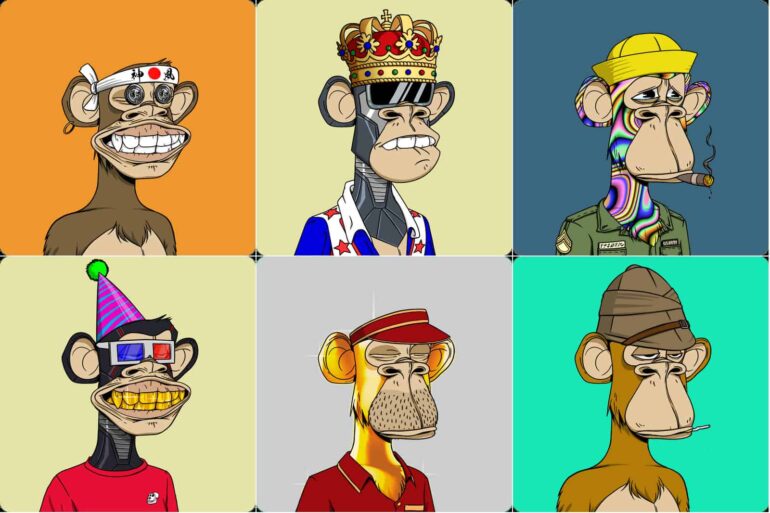Non-fungible tokens (NFTs) are all the rage, with collectors spending vast sums—in some cases, tens of millions of dollars—to own and trade unique digital images. For researchers, that offers a rare opportunity to study the way that people learn about new marketplaces and assign value to different categories of assets.
“Because NFT trading records are public, they offer a remarkable chance for us to look at why people perceive collectible items as valuable, and how those perceptions change over time,” said Jordan Suchow, a cognitive scientist who led the study at Stevens Institute of Technology.
Suchow’s team conducted the first cognitive study of NFT trading, looking at a collection of NFTs known as the “Bored Ape Yacht Club”—a set of 10,000 computer-generated cartoon apes, each with different features such as color, clothing, and accessories, that have grown immensely popular in recent months.
Each individual Bored Ape is unique, and thus equally rare, but some features are more common than others. An ape in a plain striped sweater might be more common—and thus potentially less valuable—than an ape in a suit and tie, or one wearing earrings, for instance.
“It’s a bit like stamp collecting: the stamps printed in the same run all look the same, so if there’s a printing error or some other rare feature that sets a stamp apart, people will pay far more for it,” explained Suchow, whose work, co-authored with Stevens doctorate student Vahid Ashrafimoghari, will be presented at the Cognitive Science Society Conference on July 27-30 in Toronto, Canada.
When people first began trading Bored Ape NFTs, the apes with rare features quickly became more sought-after. But that, in turn, distorted the information landscape: Because rare apes were more valuable and more widely discussed, they also became much more visible.
“Today, a newcomer to Bored Ape trading sees these rare apes everywhere and perceives them to be much more common than they are in fact,” Suchow explained. “That creates a puzzle: how can people be expected to learn about a new category when their experience of that category is dominated by the rarest examples?”
If a person wants to learn what a dog is, Suchow explains, they could do so by going to a dog park and looking at a range of common animals. Going to an experimental breeder and looking only at rare breeds, on the other hand, would skew their perception of the category and of how much any given dog is worth.
To test their theory, Suchow’s team identified the rarest and most common features in Bored Ape NFTs, then mapped their findings onto the relative value of the NFTs over time. The results were striking: while rarity was strongly correlated with value in the early days of Bored Ape trading, the connection all but disappeared as an influx of newcomers began trading the NFTs.
The findings hold lessons for collectors of all kinds, says Suchow. “We’ve shown that a focus on rarity can become self-defeating—if you want to sustain value, you need to make sure that people don’t see only the rarest items in a given category,” he explained. That could spark a rethink about how online marketplaces are designed and lead individual investors to assign less value to rarity in new markets.
Some interesting questions remain: The Stevens’ team found that some rare NFT features, such as unusually colored backgrounds, retained their value over time, while others, such as an ape’s fur color, quickly lost value. Figuring out why some features continue to correlate with value and others don’t, and how that plays out in other categories such as stamp collecting or art markets, will require additional study, Suchow said.
“The exciting thing here is that we’ve revealed a general principle: that demand for rarity is self-defeating,” Suchow said. “That should be very broadly applicable, so the big question now is whether we can observe this effect in other categories of collectible items, too.”
More information:
Jordan W. Suchow et al, The Paradox of Learning Categories From Rare Examples: A Case Study of NFTs & the Bored Ape Yacht Club, SSRN Electronic Journal (2022). DOI: 10.2139/ssrn.4082221. papers.ssrn.com/sol3/papers.cf … ?abstract_id=4082221
Provided by
Stevens Institute of Technology
Citation:
For NFT collectors, there’s a fine line between buzz and boredom (2022, June 6)


